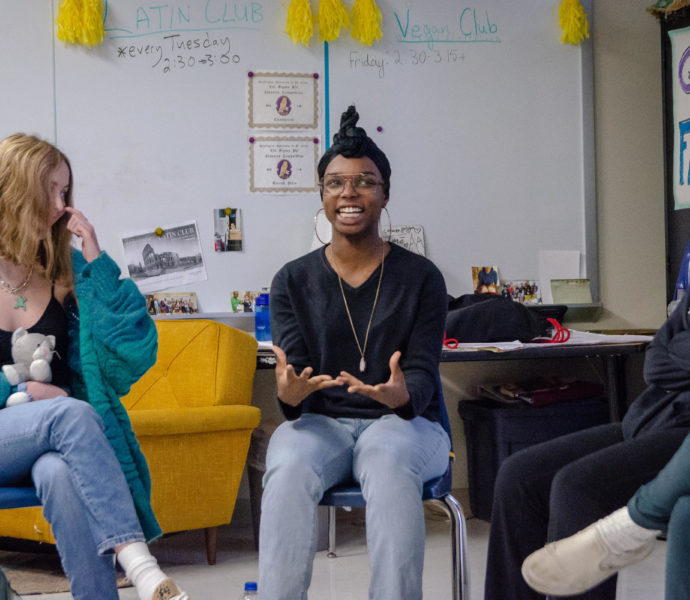Giving Kids A Say: Schools Switch From Suspensions To Restorative Justice
ByRyan Delaney
Read the full article at news.stlpublicradio.org >
There are no desks in AP Latin class at University City High School. Students instead “circle up” by facing each other in plastic chairs.
As the stuffed animal, “Felix the Talking Cat,” makes its way around the circle, one student expresses worry about an exam later in the day. Seniors fret about pending college-acceptance letters. Another shares news of unexpectedly acing a test and the group cheers.
“When you’re just able to talk about it, it doesn’t get to the point where it’s harmful to you,” said University City senior Kaya Blount.
Circles in Latin class focus on topics such as affirmation, values or mindfulness. They’re guided by their teacher, who also takes part.
“It’s just a time to calm down,” said Leah Zukosky, also a senior, about this new Thursday ritual of circling up. “You can express how you feel, and nobody’s going to judge you.”
In addition to regular circles, schools are using restorative practices to mediate arguments among a smaller group of students, or between students and staff.
Discipline with dignity
There was a time that a student acting out in class was usually met with a suspension. Research in recent years showed those suspensions disproportionately targeted students of color and simply kept them out of class without improving what was at the root of those outbursts.
If students feel a sense of community and ownership of their actions and consequences, advocates say, behavior and school climate will improve over time.
But restorative-justice mediations don’t mean students will just “hug it out” and not be punished for misbehavior. While minor offenses may no longer result in an automatic suspension, students will still be disciplined.
“It’s how you discipline,” said Gary Spiller, University City school district’s director of student support services. “We do it with dignity.”
“You really focus on the deed, not the doer,” he added. “You focus on the impact of what that student is doing and also the responsibility of that students to make things right.”
The roots of restorative justice go back to 2005 in the Oakland public-school system. It’s gained popularity in schools across the country, and many districts in the St. Louis area have adopted it. East St. Louis, Maplewood Richmond Heights and Kirkwood school districts have all codified the model in the past few years.
Restorative practices led to a reduction in student suspensions in the Pittsburgh school district, according to a large study by the RAND Corporation. Yet that same study also noted academic outcomes and test scores did not improve significantly.
Spiller often reminds people it’s called restorative practices, not restorative perfection.
“Sometimes it’s going to be great and awesome, and other times it’s going to be kind of icky,” he said. “And that’s OK, we have to continue to work through it.”
Changing culture
Teacher buy-in is not always universal. Some educators express frustration with the move toward restorative justice if schools don’t provide enough training or additional resources, such as additional social workers in the building.
“Making a change like this isn’t about flipping a switch,” said Emily Luft, a program director with Alive and Well, a nonprofit helping U City implement trauma-informed teaching and restorative practices.
“There’s a lot that goes into what has created the current state of the culture of a school. And so one training, one introduction of a tool, is not going to undo the years or decades that’s created a particular culture.”
School cultures can run deep. The KIPP charter network long used the saying “no excuses” — which was perceived to mean its schools were strict. KIPP teachers are now going through a yearlong training on implementing restorative justice, and KIPP has dropped “no excuses” from its branding.
That doesn’t mean the high expectations are gone, according to Ellen Weber, a social worker at Kipp Triumph Academy middle school.
“Having this type of interpersonal, conflict-resolution skill-building is what will get our kids to be able to put those conflicts aside in the classroom and really focus on academics,” Weber said, “but also be able to have these skills for the rest of their lives.”
